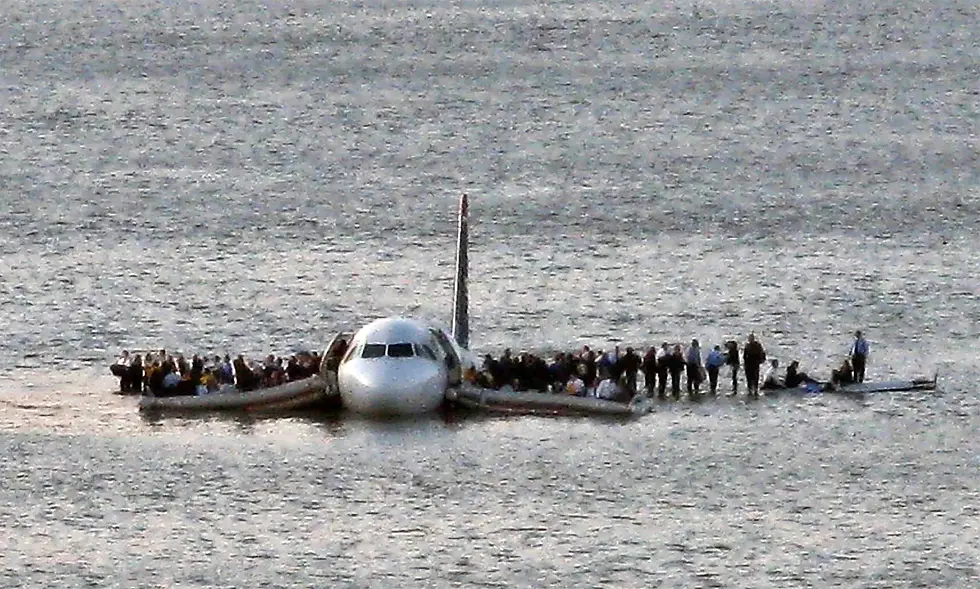Real World Resilient Leadership.
- David Yates

- May 7
- 5 min read
What Resilience Looks Like Under Pressure.
Principles matter, but stories are what we remember.
In this final part of the series, we move from theory to lived reality: the cockpit, the surgical ward, the flood zone and the battlefield.
These are the places where resilient leadership is not a concept but a decision, made in moments that matter.
The following case studies offer more than drama.
They reveal how preparation, clarity, culture and courage come together under pressure and they remind us that resilience isn’t something to be activated in a crisis, it’s something we build long before the crisis arrives.

The Miracle on the Hudson: Preparedness Meets Precision.
In January 2009, US Airways Flight 1549 lost both engines after multiple bird strikes over Manhattan. Within minutes, Captain Chesley “Sully” Sullenberger and First Officer Jeff Skiles glided the Airbus A320 onto the Hudson River. Everyone survived.
What made this outcome possible? Years of simulator training, muscle memory in checklists and Crew Resource Management. A culture of teamwork and shared decision making.
Sully and Jeff didn’t rely on heroics.
They relied on practice, awareness and systems thinking. This moment revealed several resilient leadership principles in play:
Situational awareness: rapid assessment of altitude, glide capabilities and landing options.
Calm under pressure: clear communication and task division between pilots.
Trust in systems and people: confidence in their own experience, their training and despite not having flown together previously, each other.
As Sullenberger later reflected;
“One way of looking at this might be that for 42 years, I’ve been making small, regular deposits in this bank of experience, education and training. Then on that day, the balance was sufficient so that I could make a very large withdrawal.”

Healthcare Under Pressure: The Cost of Silence, the Power of Change
Royal Darwin Hospital, 2022
In 2022, a 48-year-old woman underwent a minor surgical procedure at Royal Darwin Hospital.
What should have been a routine post-operative recovery turned catastrophic: a breathing tube was mistakenly inserted into her oesophagus instead of her trachea.
The critical error went unnoticed for an extended period, leading to severe and irreversible brain damage due to oxygen deprivation. She later died.
The subsequent investigation revealed more than a single failure.
The NT coroner identified systemic vulnerabilities: unclear protocols, poor handover procedures, under-resourced recovery units and a failure to act on earlier warning signs.
One of the most haunting elements was the climate, team members hesitated to question decisions or speak up assertively when something felt wrong.
This was not just a clinical failure. It was a psychological safety failure.
Post-incident, the hospital moved swiftly. Leadership acknowledged systemic responsibility and they didn’t scapegoat.
They listened, not just to senior consultants, but to junior staff, recovery nurses and anaesthetists who had long voiced concern about the fragility of the handover environment.
What changed?
They revised and clarified airway management protocols, introducing clear, non-negotiable escalation pathways.
Teams underwent simulation-based training focused not just on technical skills but on speaking up, voicing doubt and listening across rank.
Equipment standards were tightened, including checks that ensure visual confirmation of tube placement before patient transfer.
Most importantly, the conversation shifted. Senior clinicians began opening briefings with lines like: “If something doesn’t feel right, say so. You won’t be punished.”
The result wasn’t a perfect system, it never can be, but a more resilient one. Because the hospital had chosen to confront, listen, and redesign.
This case is a painful reminder that silence is not neutral. In complex systems, it is a signal and resilient leadership means creating conditions where even the quietest voice can surface a concern, before it becomes a tragedy.

The Thai Cave Rescue: Adaptive Leadership on a Global Stage.
When 12 boys and their football coach were trapped deep inside a flooded cave in northern Thailand in 2018, the world watched a rescue effort unlike any before.
Thai leaders quickly acknowledged the limits of their expertise and called in international cave diving specialists.
What followed was a masterclass in cross-boundary leadership: military, medical, engineering, diving and meteorological experts coordinated a high-risk plan that required sedating and extracting the boys underwater.
They practiced on anaesthetised pigs, ran simulations and they used humility and openness as their decision-making style.
Psychological safety extended beyond any one team, it became a system-wide norm. Ideas were welcomed and risks were owned collectively.
When the high-stakes decision came (to proceed with the extraction), it was based on trust, dialogue and deeply held values: do everything possible and do it together.
Resilience here meant distributed leadership, improvisation informed by expertise and it meant holding emotional weight with collective grace.

Combat Zones and Command Intent: Trust at the Tactical Edge.
In April 2004, during the Iraq War, a US Army patrol in Sadr City came under heavy attack.
Communications were lost, chaos unfolded, but the platoon didn’t freeze.
Why? Because they had trained for this and their leaders had instilled a simple doctrine: everyone knows the mission and everyone is trusted to act in its service.
Junior leaders took initiative.
The company commander, sensing trouble, launched a rescue team without waiting for confirmation.
Afterward, during the debrief, they didn’t breathe a sigh of relief and move on. They asked hard questions. Why was the radio antenna vulnerable? Why had patrol routes become predictable?
They adjusted doctrine, adapted and learned.
This is resilience in its most demanding form, but it wasn’t luck, it was the result of investment in training.
In team trust and in learning as an operational, daily habit.
Resilience Beyond the Frontlines: The Invisible Systems That Work.
Not all resilience is dramatic. Sometimes, it’s in the unnoticed near-miss, the quiet save, the cultural norm that says “speak up, even when uncertain.”
A logistics company redesigns a process after a near-error flagged by a new employee, or a software firm invites post-mortems even on successful launches.
A school leader normalises reflection, stress management and team care after an intense term.
These kinds of practices don’t make headlines, but they build capacity. They make systems safer, stronger and more human over time.
This is the point: resilience is not what happens after the fact. It’s what we embed before the fact, so when reality deviates, we don’t collapse. We adjust.

Closing: From Crisis Heroics to Everyday Leadership.
The through-line in all of these cases is simple, but profound: resilience is not a solo act. It is a collective capacity, shaped by preparation, culture, trust and
continuous learning.
It is the choice to learn rather than blame. To prepare rather than hope, empower rather than control and to decentralise when possible then step up when needed.
We began this series with a premise: that resilience must become the foundational lens for leadership, a world view.
Now, having explored the theory, the principles and the lived examples, that premise becomes clear:
Resilient leadership is what allows complexity to be navigated with clarity. It is what sustains performance over time and iit is what gives people, at every level, the courage to act with both strength and care.
In the end, the most resilient organisations are not the ones that avoid difficulty.
They are the ones that face it, together.



Comments